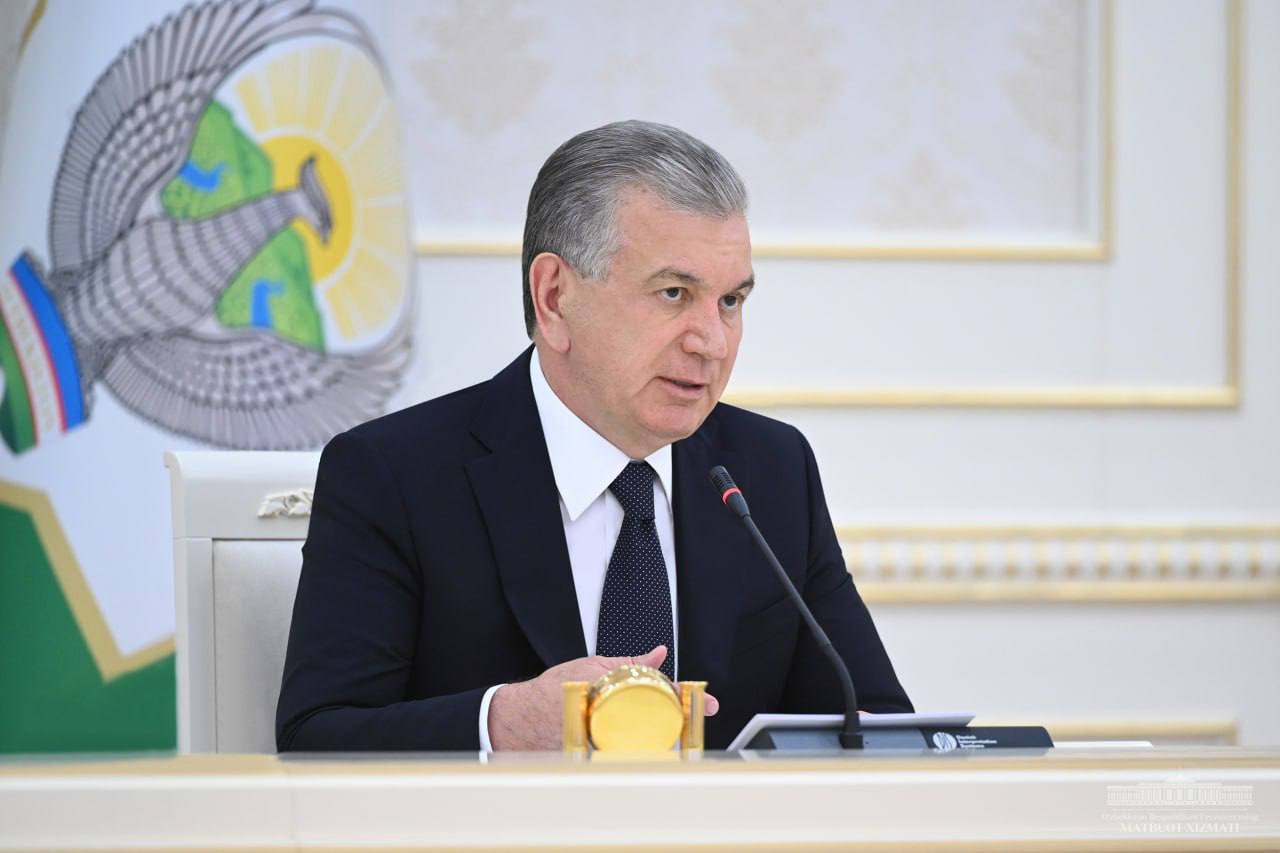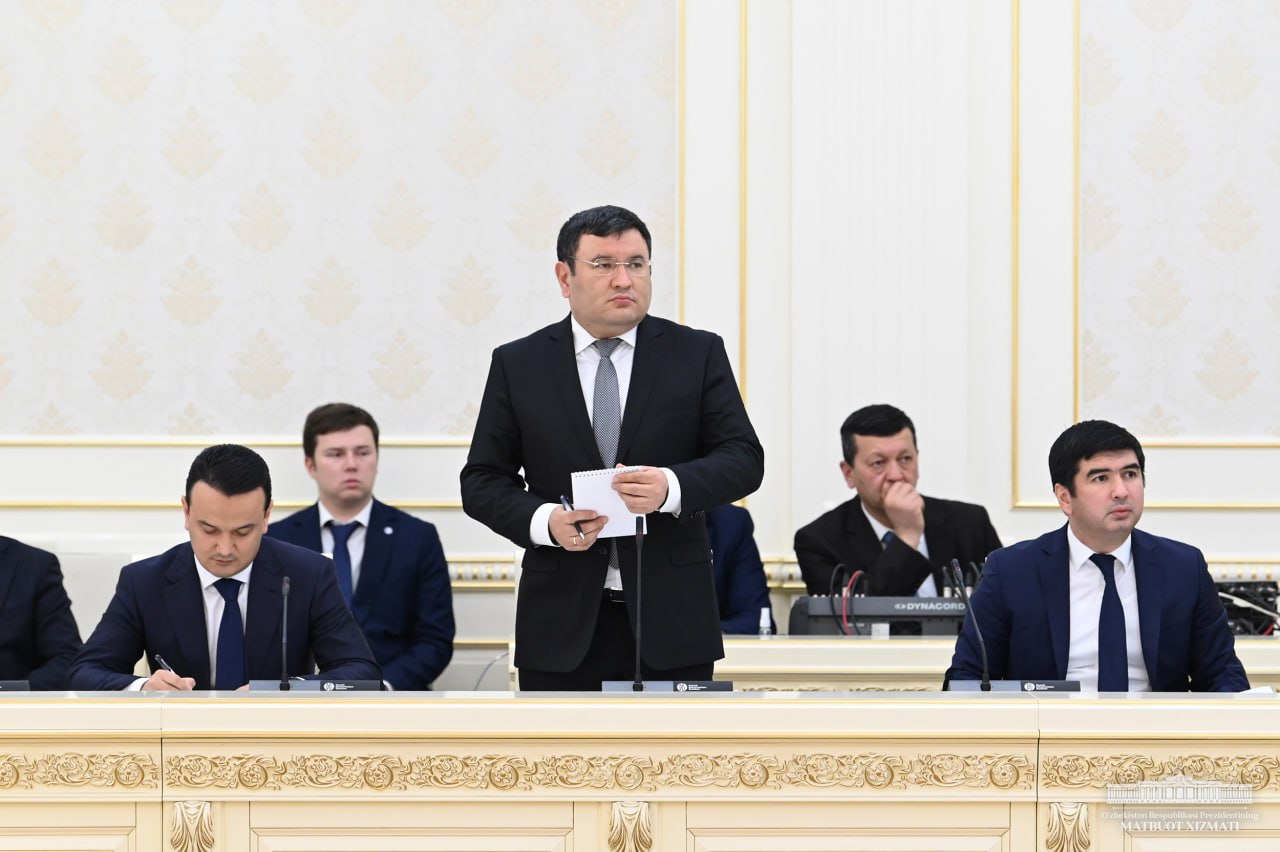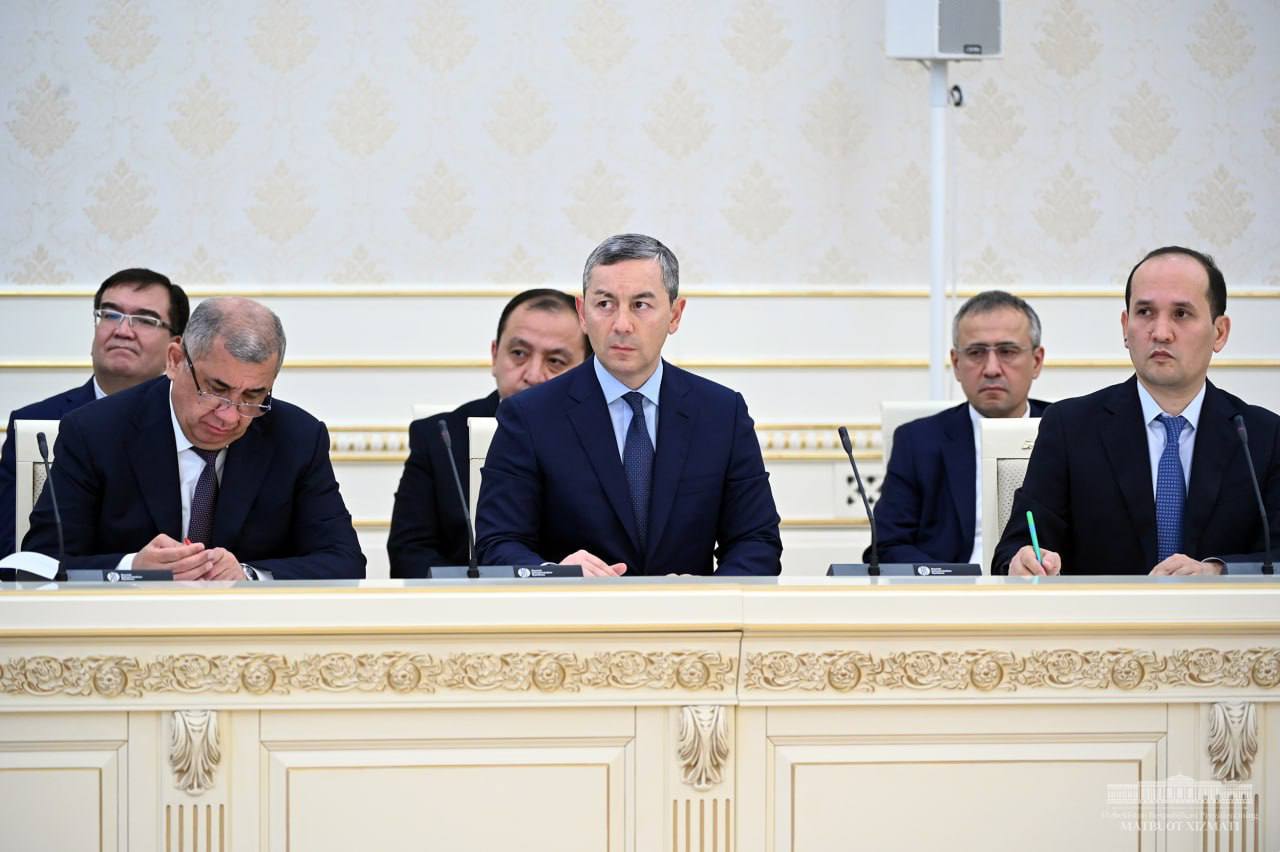
10.01.2023
On January 10, President Shavkat Mirziyoyev chaired a video conferencing on industrial development and identifying additional reserves.
Industry plays a very important role in the economy and employment. Over the past years, 19 free economic zones and more than 400 small industrial zones have been created, and 10 trillion Uzbek soums have been allocated for their infrastructure in order to create necessary conditions for industries. $3 billion of financial resources were allocated to transform such industries as textile, chemistry, construction materials, leather, pharmaceutical and electro-technical industry into "drivers". Geological exploration has been tripled and more than 600 new deposits have been discovered to supply the industry with raw materials.
As a result, over the past five years, the number of industrial enterprises has doubled to 100 thousand, and the volume of production has increased by 1.4 times.
All these factors have a positive impact on the development of the regions. In particular, such new industries as construction materials, automotive, and food industry have emerged in Jizzakh. 220 projects on construction materials have been launched, and the share of this sector in the region's industry has exceeded 20 %.
19 major projects on metal processing have been implemented in Samarkand, Syrdarya, Namangan and other regions. In 2022, the output worth 3 trillion Uzbek soums produced in 54 new small industrial zones, established in Namangan.
Over the past three years, the volume of production in chemical industry has increased by 1.5 times and the export has doubled.
Meanwhile, the results in some regions do not correspond to the opportunities. In particular, the industrial growth in Navoi, Bukhara and Tashkent regions in 2022 was below expectations. The yarn processing level remains law in the Republic of Karakalpakstan, Jizzakh, Kashkadarya, Surkhandarya, Fergana and Khorezm regions. The potential of food, leather and footwear production, and furniture is underutilized in Namangan, Samarkand and Navoi regions.
In this regard, the measures to develop the industry, increase investments in the sector and exploit the reserves were discussed at the meeting.
The President has emphasized that new opportunities and additional financial resources will be provided to the industry.
Primarily, banking regulations will be revised and additional resources of 55 trillion Uzbek soums will be allocated to commercial banks for enterprise lending. This means an additional investment-funding source of $20 million for each district on average.
The other possibility is that 1.7 trillion Uzbek soums will be allocated for infrastructure of industrial zones and large investment projects in 2023. The territory of "Gijduvon" and "Kokand" free economic zones will also be expanded. The branches of "Urgut" free economic zone will be established in Karakalpakstan and Kashkadarya.
Thirdly, in 2023, 27 types of tax benefits, subsidies and preferences will be provided for 60 districts of the fourth and fifth categories, whose economic development is lagging behind.
Fourthly, there will be preferences for producers of carpets, home textiles, leather, and jewelry. Thus, in 2023, an additional $300 million will be allocated for textile projects. Customs exemptions on more than 200 types of imported raw materials for the leather and footwear industry will be extended for three years. Jewelers will be able to purchase raw materials at a discount, as well as receive tax, customs and banking privileges.
The President underscored the need for greater awareness of the population and entrepreneurs about these opportunities and to increase the number of projects on the ground.
It is noted that 1,264 projects will be launched in the industrial zones. An important task is to ensure the launch of the 6th hydrometallurgical plant in Navoi region and the third copper-processing plant in Almalyk, a modern foundry in Andijan region and a cluster of agricultural machinery in Chirchik.
The responsible officials have been tasked with expanding industrial cooperation, implementation of localization projects worth $ 6 billion, timely commissioning of about 3 thousand projects included in the regional investment programs.
On the whole, it is indicated that it is possible to increase the industrial production by 14 % this year, exploiting all reserves.
The heads of industries and khokims (governors) presented their plans and proposals on the issues discussed at the meeting.









